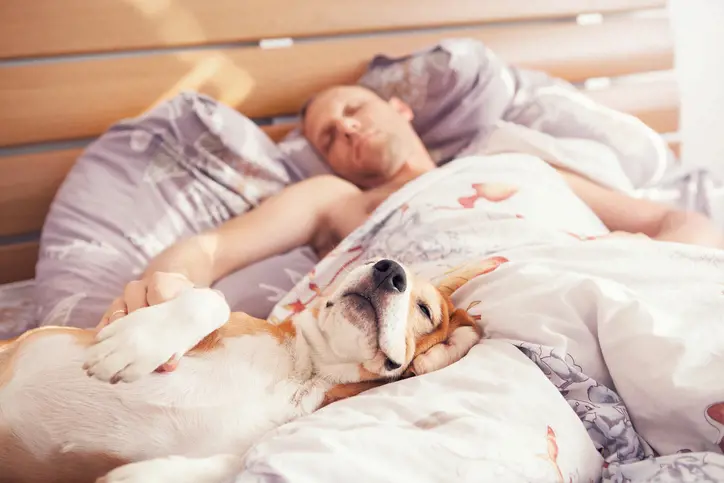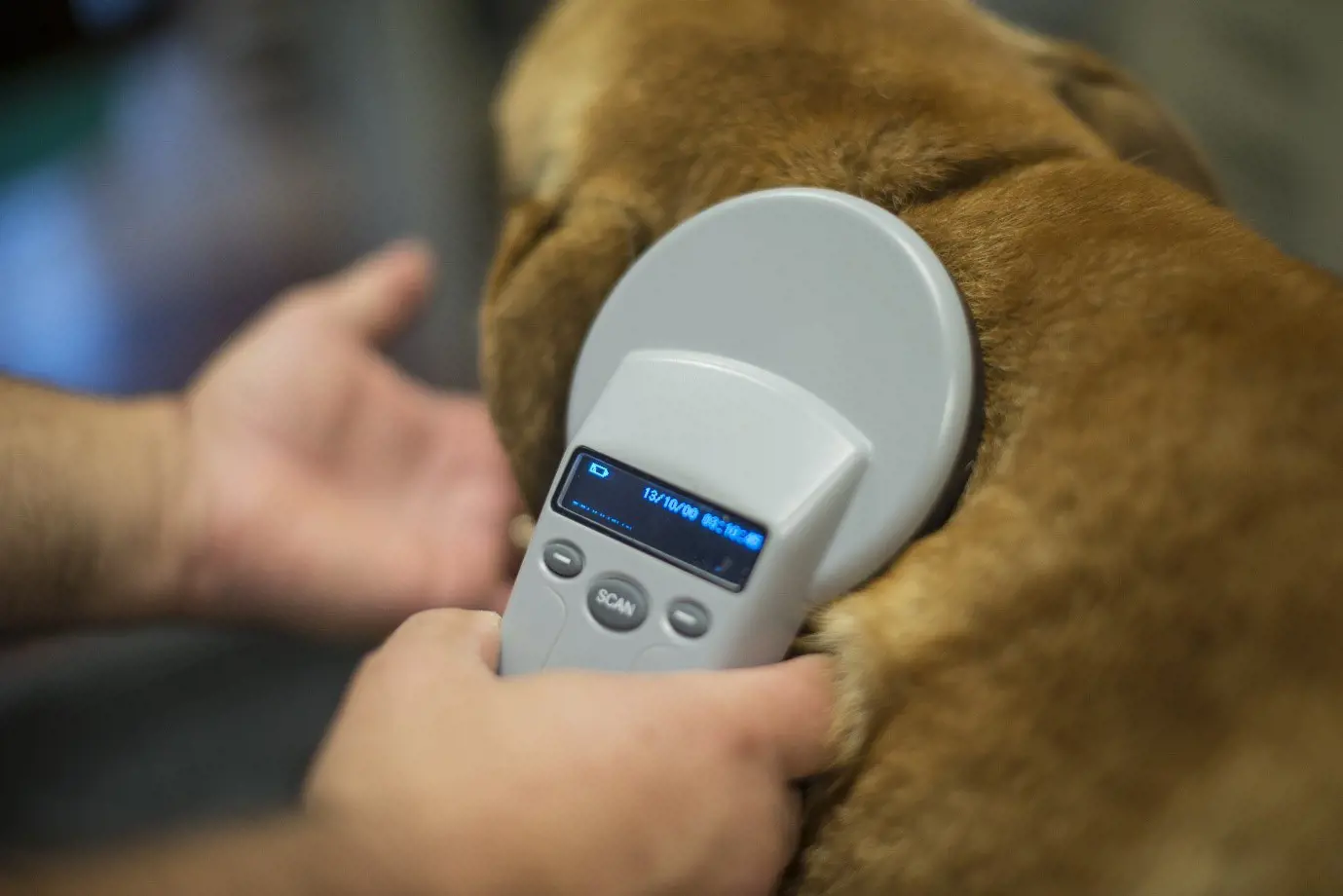17 tips on how to look after your dog's teeth
16th April, 2021
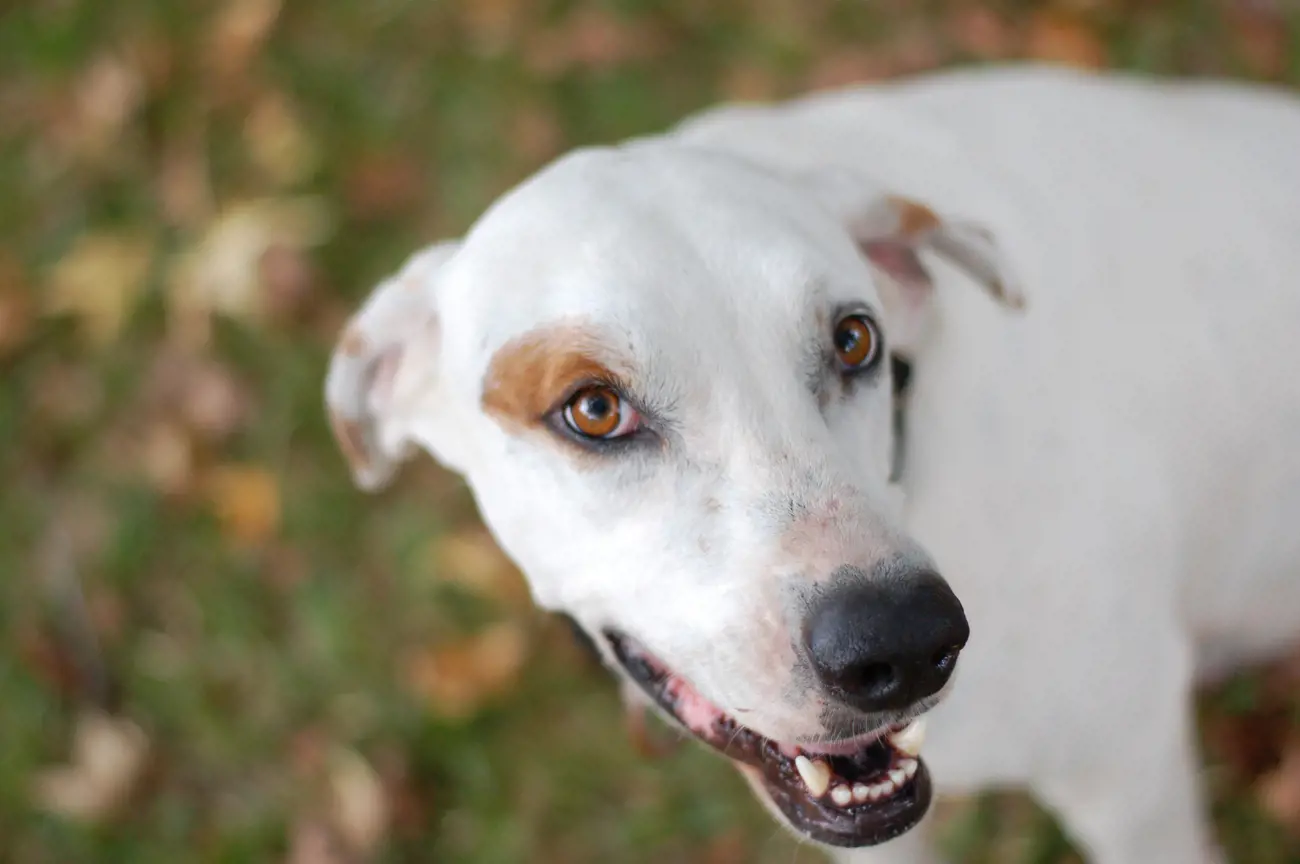
Any problem with a dog’s teeth can have a huge impact on their physical and mental wellbeing. That’s why looking after your dog’s teeth is such a key part of being a responsible dog owner. If you’re wondering how to get started, then read on. Our quick guide to dental care has some great tips to keep your dog’s teeth in sparkling condition.
That’s why looking after your dog’s teeth is such a key part of being a responsible dog owner. From regular teeth cleaning to giving them chews to scrape away excess plaque, there are plenty of things you can do to stop your dogs teeth problems developing.
If you’re wondering how to get started, then read on. Our quick guide has some great tips to keep your dog’s teeth in sparkling condition.
Caring owners not only look after their pet but also have the right insurance for pets in place - that way your faithful friend can get the help they deserve at any time.
Give our team of insurance specialists at Purely Pets a call. We’ll be only too happy to discuss the best cover for your dog’s needs.
A quick guide to dog teeth
Provided they haven’t lost or broken a tooth, an adult dog should have 42 teeth in total; 20 in their top jaw and 22 in their bottom jaw.
A puppy, on the other hand, usually has 28 milk teeth in total; 14 in their top jaw and 14 in their bottom jaw.
If you look at your dog’s teeth you’ll notice they have four different types of teeth, just as you do. These are:
-
Incisors – These small teeth are found at the front of the mouth and are perfectly shaped for scraping the meat from bones. You’ll also notice dogs using them for grooming when they nibble at their coats to remove debris and irritating parasites.
-
Canines – These most distinctive fang-like teeth are long and pointed and found on either side of the groups of incisors. Designed for tearing meat apart but also for locking items in place, such as bones or their favourite stick.
-
Pre-molars – Located behind the canines and further back in the mouth, these sharp-edged teeth are used to chew and shred food.
-
Molars – Large powerful teeth at the back of the mouth used to grind and break down hard foods such as biscuits and bone.
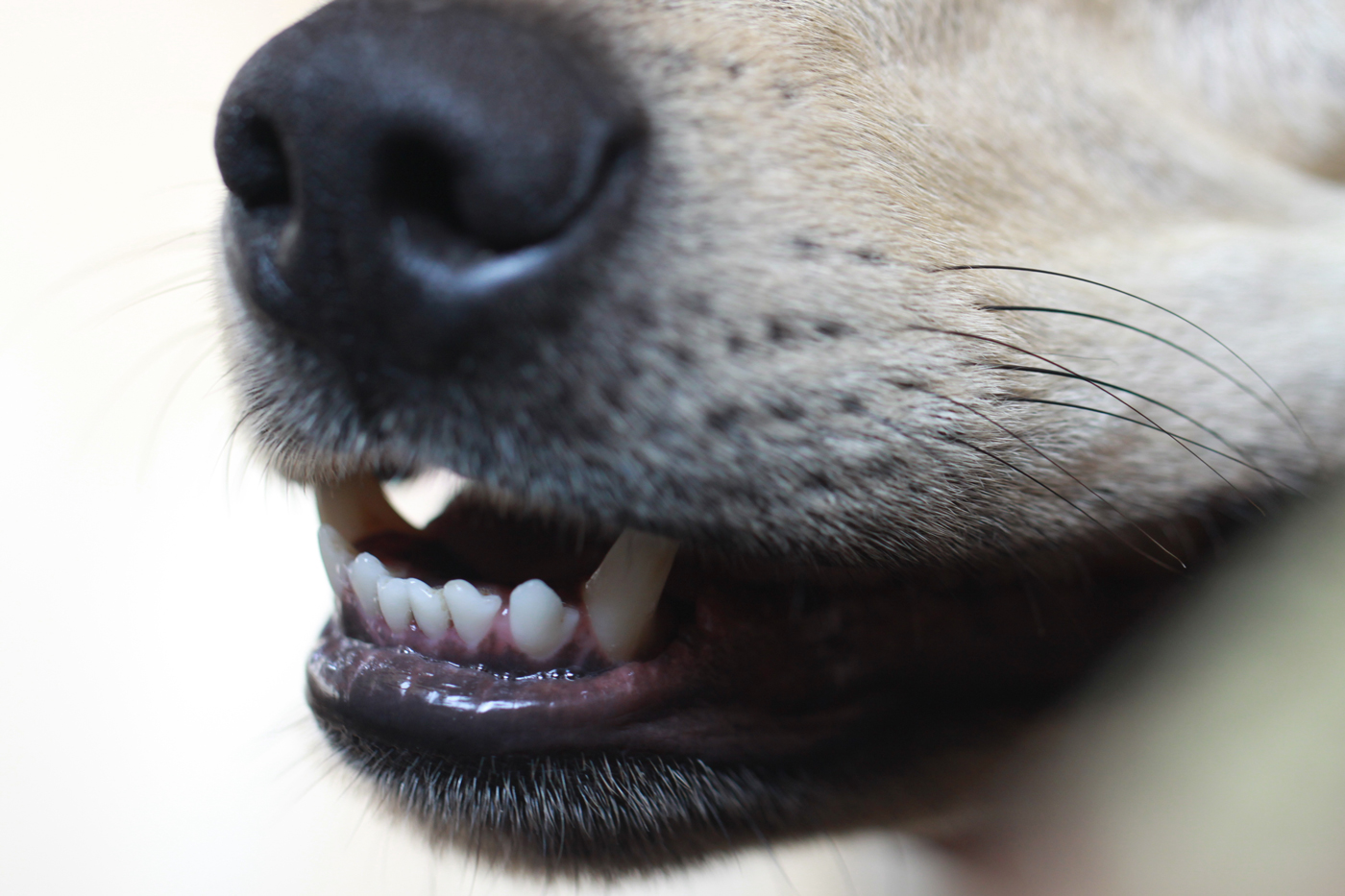
Common dental problems in dogs
While your dog’s teeth might not be one of the first health problems you think of, a recent study by the Royal Veterinary College found that dental disease is actually very common.
Indeed, 12.5% of dogs developed dental disease during the study period compared to 7.3% for ear infections and 7.1% for obesity. Making it the most common health problem among dogs. Here are some of the most common dental issues to look out for.
Plaque and tartar build-up
Every day a thin, colourless layer of bacteria and food debris called plaque builds up on your dog’s teeth.
If this sticky layer is not removed then minerals in the dog’s saliva will soon harden this into a dental calculus called tartar.
This yellow or brown coloured substance is far more difficult to remove. If left to build up it soon leads to other problems including loose teeth and disease.
Gingivitis
As plaque builds up you’ll notice a thin red line of inflammation appearing along the gums. While reversible, if it’s untreated it leads to the early stages of irreversible periodontal disease.
Periodontal disease
Tartar build-up and inflammation of the gums allows bacteria to make their way under the gum line leading to periodontal disease.
This is where the deep supporting tissue and bone holding the teeth in place are eaten away and degrade.
As this happens more food debris and bacteria can collect around the teeth roots and the disease progresses further. Eventually leading to loose or even lost teeth.
Infections
As the space around the roots becomes further packed with bacteria, an infection can occur. This can lead to the formation of a painful, pus-filled abscess.
Tooth fractures
Dogs instinctively need to chew and this can lead to problems. Items like bones or hard plastic can cause teeth to break.
Cavities
While dogs are far less prone to dental decay than humans, cavities can still happen.
Bad breath
Dogs aren’t always known for their fresh breath, but if it smells bad then it could be down to an infection or periodontal disease.
Other conditions such as kidney failure, diabetes or oral cancers can also cause bad breath. So, it’s always best to get it checked out.
Having the right pet insurance in place means you can get help early before more serious problems develop.
Mouth ulcers
A build-up of plaque can rub against a dog’s gums and cause painful ulcers.
Retained milk teeth
In the majority of cases, a puppy’s milk teeth will be pushed out by their adult teeth. However, sometimes this doesn’t happen and some are retained. Most vets advise removing them to prevent tartar build-up and over-crowding.
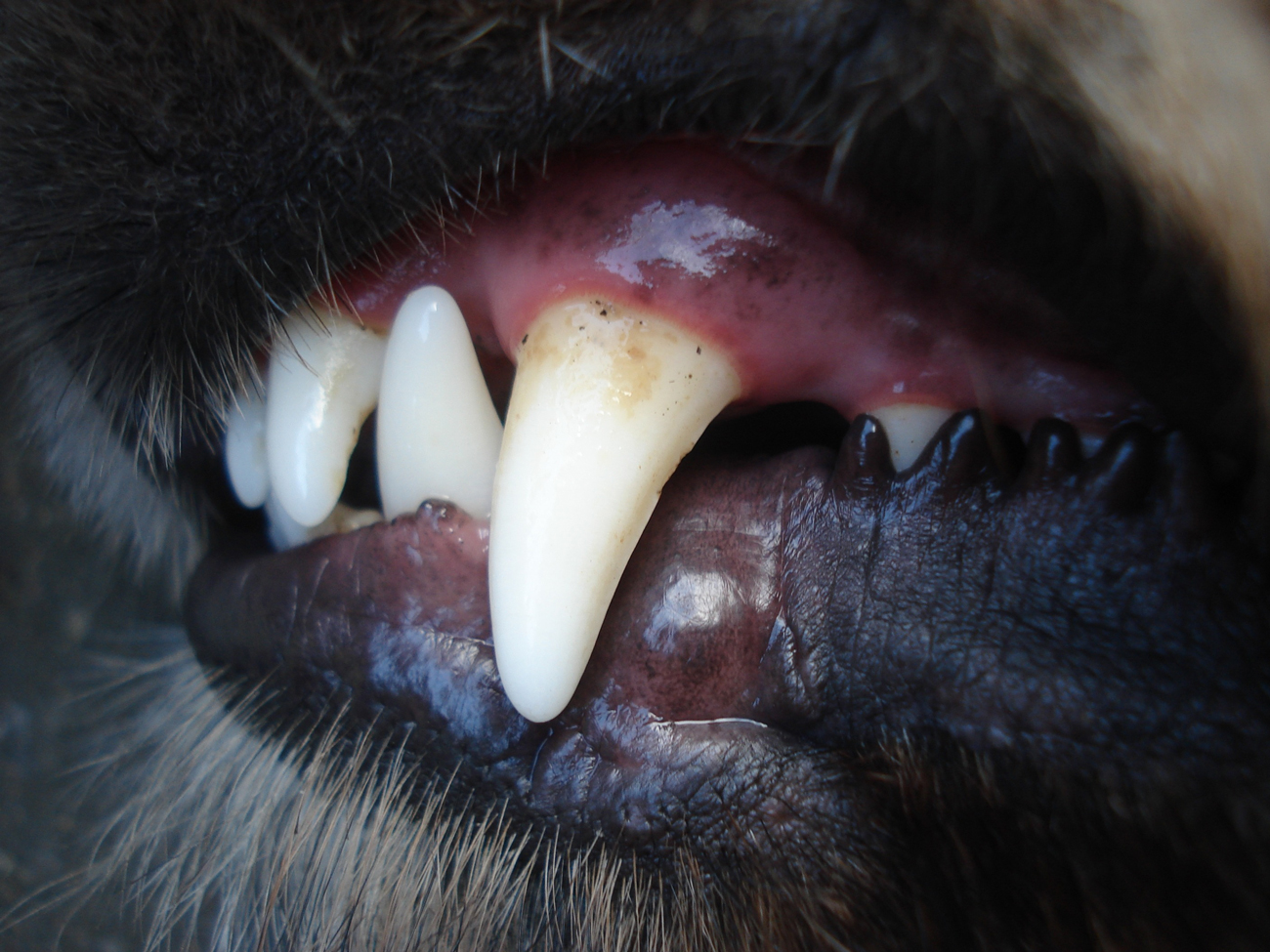
Signs of dental problems
It’s important to check your dog’s mouth regularly for signs of oral disease. Their gums should be a healthy pink, and the teeth an off-white with minimal tartar build-up.
Just like most animals, dogs will normally try to hide their pain, so watch out for these more noticeable signs:
-
Bad breath
-
Gingivitis
-
Tartar build-up
-
Chewing on only one side of the mouth
-
Difficulty eating
-
Excessive drooling
-
Not playing with their favourite toys
-
Avoiding touches on their nose or head
-
Pawing at the teeth or mouth
-
Sneezing or nasal discharge
-
Bloody saliva
-
Weight loss or loss of appetite
-
Discoloured, fractured, loose or missing teeth
-
Swelling under the eyes or in the mouth
-
Swollen or misshapen jaw
-
Receding gums
Untreated dental problems don’t just affect the mouth. Bacteria from these areas can easily enter the bloodstream and affect major organs such as the liver, kidneys and heart.
Never ignore symptoms and hope they’ll get better on their own. Act quickly to avoid future heartache.
How to keep your dog’s teeth clean
There are plenty of ways to keep your dog’s teeth clean and free from disease. These include:
-
Regular brushing. Either every day or at least three to four times a week.
-
Regularly checking their teeth and mouth.
-
Giving them appropriate things to chew on including bones, dog chews and special dental chew products. Blue Cross warns dog chews should be of the correct size for your dog – too small and they could choke, too large and they could damage their teeth.
-
Taking them for a dental check-up as part of their regular veterinary care.
-
Feeding them a good quality, healthy diet that is low in sugar and fat. Always check treats are also healthy and good for their teeth.
-
Use fresh breath sprays. Providing they have good oral health these sprays can help maintain fresh breath. Speak to your vet to see if there is one they would recommend.
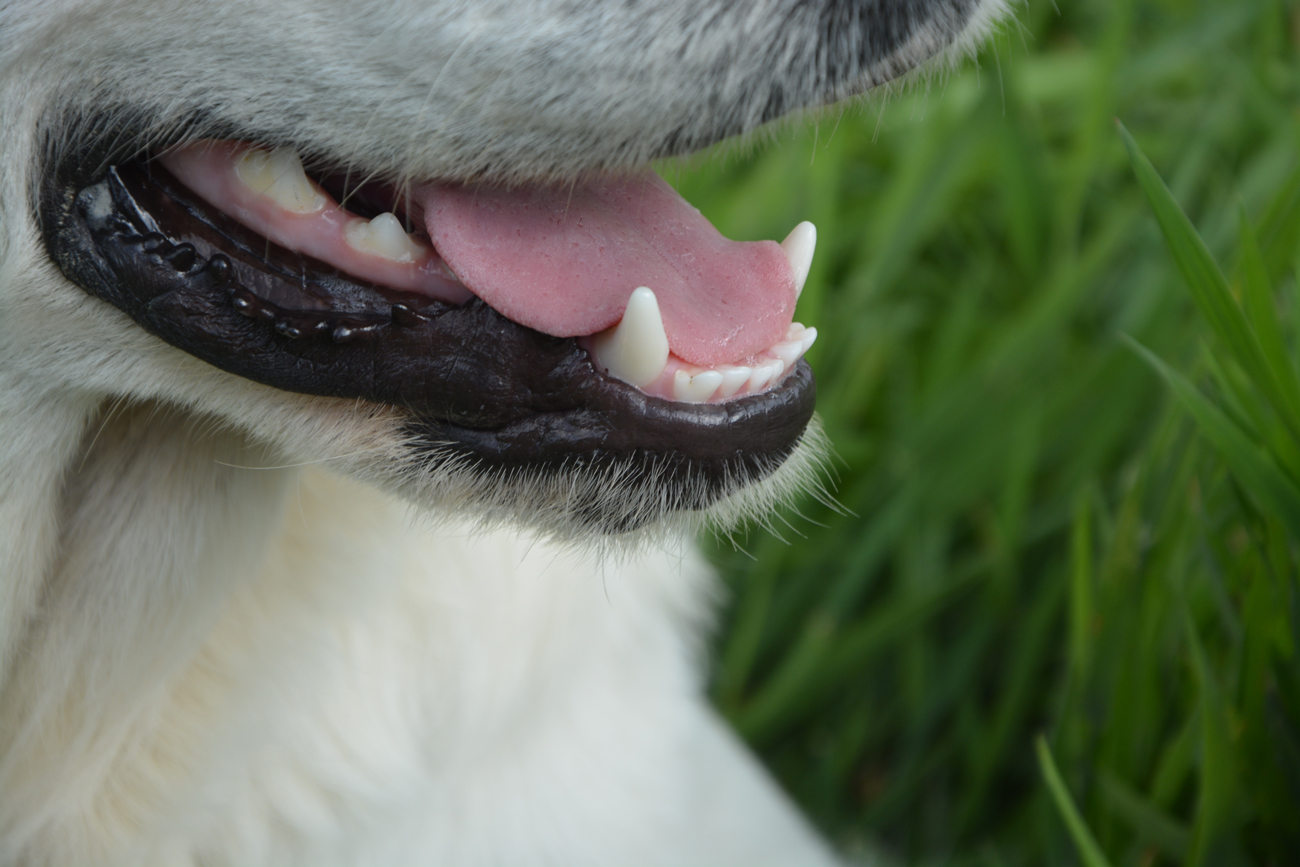
How to brush your dog’s teeth
The number one way to keep your dog’s teeth clean has to be with a spot of daily tooth brushing. But don’t worry, it’s much easier than you think if you follow these simple steps.
-
Buy some specially formulated enzymatic dog toothpaste and a soft toothbrush from your vet. Never use human toothpaste as it contains chemicals toxic to dogs.
-
Start from as early an age as possible so they get used to the experience. Don’t despair if you’ve an older dog – training might just take a little longer.
-
Pop a small amount of pet toothpaste in their food so they get used to the taste. Dog toothpaste comes in several flavours including meat, mint and malt so there should be one they like.
-
After a few days put some on your finger and let them lick it off.
-
If they seem happy, then start to run your finger along the inside of their mouth. Follow the gum line and get them used to the brushing action. Don’t rush this stage, and always stop if they seem uncomfortable.
-
After a few more days, you can begin to introduce the toothbrush. Start off by simply allowing your dog to lick the toothpaste off the toothbrush.
-
Once they are used to the brush you can start gently brushing the incisors and canines. Use circular motions targeting the gum line in particular. Then move onto the premolars and molars, stopping regularly to allow them to lick the toothbrush.
Provided you keep training sessions short and sweet, after a couple of weeks you should be able to brush your dog’s teeth without too much fuss. The Dogs Trust has a helpful leaflet on dental hygiene that’s worth reading.
Speak to your vet if you have any problems. And remember, pet insurance policyholders with Purely Pets have access to our 24-Hour Vet Helpline where you can get helpful guidance from veterinary professionals for all manner of issues.
Taking your dog for a dental check up
Even if you are regularly brushing your dog’s teeth and checking for problems it’s always worth booking in a regular dental check-up with your vet.
A check-up is usually quite straightforward and involves looking for any swelling or discharges around the face or mouth area.
They will then inspect the lining of the lips, teeth and gum surfaces, hard-to-reach inner surfaces as well as their tongue, palate, tonsils and under the tongue.
If your dog's teeth have a heavy build-up of tartar then your vet may recommend this is removed, and their teeth polished, under anaesthetic.
Are some dog breeds more at risk of dental problems?
Just as with many health conditions, certain breeds of dog tend to be more susceptible to problems with their teeth. Smaller breeds in particular appear to be more susceptible to periodontal disease. That’s why researching any dental health issues with a breed is always time well spent.
Pug
These little cuties along with other short-muzzled breeds like English Bulldogs and Boston Terriers can suffer from overcrowding of the teeth. In turn this can lead to plaque build-up, gingivitis, periodontal disease, and even tooth loss.
Collie
With their narrow muzzles, Collies are one of the breeds (Dachshunds are another) most affected by overbites. An overbite can lead to tooth-on-tooth wear and soft tissue trauma.
Yorkies
Known for so-called ‘Yorkie breath’ these small and toy breeds (along with Poodles, Maltese, and Pomeranians) are susceptible to retained milk teeth. These extra teeth can lead to tartar build-up and periodontal disease.
Chihuahuas
Such a tiny breed means such a tiny mouth – but they still need to fit all 42 teeth inside! The inevitable tooth overcrowding leads to tartar build-up and subsequent disease. Other affected breeds include Lhasa Apsos and Cavalier King Charles Spaniels.
Boxers
Gingival hyperplasia is an overgrowth or thickening of the gums that can cover the teeth. Boxers as well as Great Danes, Mastiffs, English Bulldogs, and Collies are all susceptible to this condition.
Shih Tzus
When a dog’s teeth erupt from the gums later than normal it can cause tooth impaction and cyst formation. Shih Tzus, Lhasa Apsos, Maltese, and Havanese are all breeds potentially affected by delayed tooth eruption.
Keeping on top of common tooth problems before they get worse is a vital part of owning any of these breeds. The Kennel Club is an important source of help and advice for health issues with any breed.
Keep on top of tooth problems with pet insurance
Veterinary treatment for even minor dental problems can soon become expensive, particularly for breeds which are more prone to problems.
Purely Pets can help cover costs for dental cover caused by accidents in your first year of cover and from your first renewal will extend dental to accident and illness.
Having the right pet insurance is an important way to protect yourself from financial concerns so you can concentrate on keeping their pearly whites sparkling fresh.
Our team has designed 15 levels of lifetime cover, so finding a policy to suit your budget and requirements has never been so easy and straightforward.
Indeed our Lifetime Gold products have recently been awarded a 5* Defaqto rating for 2021 and come with full access to a handy online policy management portal.
Get a quote for pet insurance from Purely Pets today.
Policy benefits, features and discounts offered may very between insurance schemes or cover selected and are subject to underwriting criteria. Information contained within this article is accurate at the time of publishing but may be subject to change.
Helpful Pages
Recent Posts
Pet Insurance Quote
- 98% claims paid *
- Claims paid directly to vets
- 24/7 vet video consultations
- Interest free monthly payments



